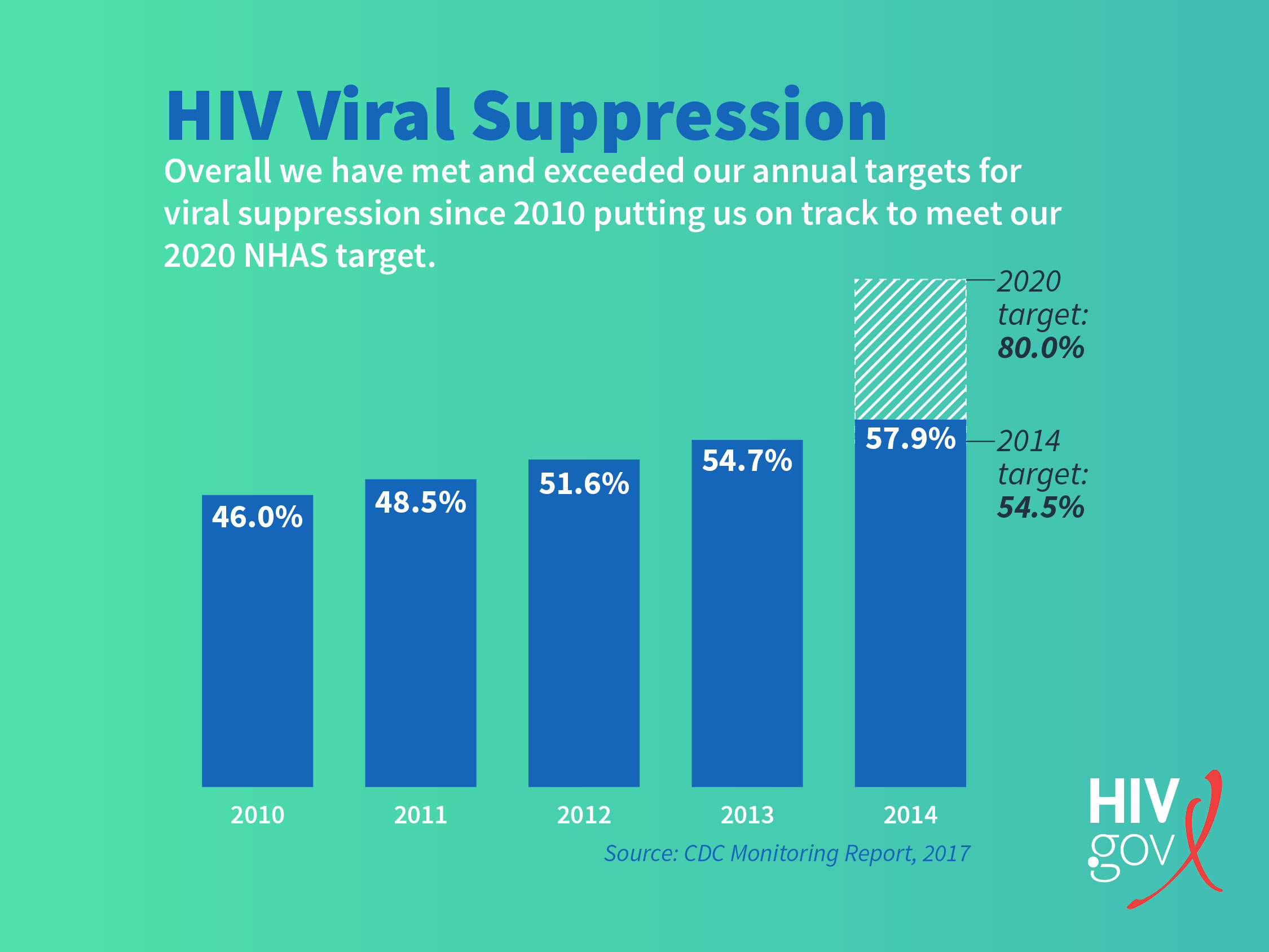On Track But Continued Progress Needed on HIV Viral Suppression to Achieve Our Nation’s Goal
Topics
Listen to an audio recording of this blog.

The science is clear: recent scientific advances in our understanding of the impact of HIV treatment have shown that achieving and maintaining viral suppression improves the health of those living with HIV and prevents the transmission of new infections. Further, data modeling shows that achieving viral suppression among people living with HIV is the single most effective strategy for reducing new infections and ending the epidemic in the United States.
The Monitoring Report [PDF, 2.31 MB ] released in July 2017 by the Centers for Disease Control and Prevention (CDC) shows that our NHAS annual target (54.5%) for the percentage of people living with diagnosed HIV infection who were virally suppressed in 2014 was exceeded (57.9%). This is consistent with results in prior years in which we exceeded our annual targets for viral suppression each year, putting us on track to meet our 2020 NHAS target.
The NHAS indicator and the HHS Core HIV Indicators define viral suppression as having a viral load result of <200 copies/mL at the most recent viral load test. CDC monitors viral suppression using laboratory data from jurisdictions with complete reporting of CD4 and viral load tests. In 2014, there were 38 jurisdictions with complete laboratory reporting, representing 72% of all people ≥13 years old living with diagnosed HIV in the U.S.
Despite exceeding the latest NHAS annual target overall, when we look at the data further, we see a number of groups who are being left behind in America. In 2014, we failed to meet the annual target for viral suppression (54.5%) among:
- People below the age of 34, including ages 13-24 (48.1%) and ages 24-34 (52.3%);
- Black/African Americans (51.5%);
- People who inject drugs, including men (48.4%) and women (53.2%); and
- Heterosexual men (53.5%).
It is critical that we address these disparities to ensure that we can continue to meet our annual targets moving forward and ultimately reach or even exceed the NHAS 2020 target.
Achieving the 2020 target will also require that we continue to make improvements along each step of the HIV care continuum. This may be made easier by the recent scientific advances that provide the basis for the shift toward immediate treatment upon diagnosis and may, in time, reduce HIV stigma and its impact on individuals accessing HIV testing, care, and treatment.
In addition, increasing viral suppression will also require that we continue to make important progress in expanding efforts to reengage individuals in HIV care through strategies such as Data to Care, in improving delivery of care in health centers and other settings, and in building sustainable partnerships among health departments and health centers such as in the Partnerships for Care program administered by the CDC and Health Resources and Services Administration with the support of funding from the Secretary’s Minority AIDS Initiative Fund. It will also require that we ensure we have the capacity and resources to care for more and more of those who we newly engage in care while continuing to care for all those who are already in HIV care. Further, it will require that we address, head-on, other factors that impede someone from achieving viral suppression such as stigma, limited access to holistic health care, which treats the entire person, and other barriers to economic and social well-being.
In the next post in our continuing NHAS Indicators series, we will look at indicators highlighting disparities in HIV viral suppression among specific subpopulations. Stay tuned…